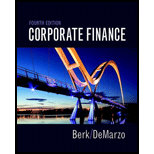
Explain some of the differences between a public debt offering and a private debt offering.
To discuss: The difference between a public debt offering and a private debt offering.
Introduction: Debt offering happens when a company issues debt; it is basically a loan from an investor who purchases deb. The investor receives a promise or commitment that the debt issuer will pay some type of interest to the debt holder and, at a later date, pay back the principal payment to the investor.
Explanation of Solution
The difference between a public debt offering and a private debt offering is as follows:
A private debt offering is held in private to a select group of investors. Since the bonds are not public, the financial information is not required to be published and they do not require a credit rating. On the other hand, public debt offering is where a company publicizes their upcoming debt offering information like date, time, place and various types of security offerings to the public and potential investors. Financial information must be published annually to the public for a public debt offering. These public debt offerings are very competitive, so it requires credit rating in order for the investor to easily understand the debt creditworthiness of the public debt offering.
Want to see more full solutions like this?
Chapter 24 Solutions
Corporate Finance (4th Edition) (Pearson Series in Finance) - Standalone book
Additional Business Textbook Solutions
Business Essentials (12th Edition) (What's New in Intro to Business)
Auditing And Assurance Services
Gitman: Principl Manageri Finance_15 (15th Edition) (What's New in Finance)
Operations Management
Marketing: An Introduction (13th Edition)
Horngren's Cost Accounting: A Managerial Emphasis (16th Edition)
- Answer! What does ROI stand for in finance?A) Rate of InflationB) Return on InvestmentC) Ratio of IncomeD) Return on Insurancearrow_forwardNeed steps! Which one is a short-term source of finance?A) Bank loanB) DebentureC) Trade creditD) Equityarrow_forwardWhich one is a short-term source of finance?A) Bank loanB) DebentureC) Trade creditD) Equity need answer.arrow_forward
- Need help! Which one is a short-term source of finance? A) Bank loanB) DebentureC) Trade creditD) Equityarrow_forwardWhich one is a short-term source of finance?A) Bank loanB) DebentureC) Trade creditD) Equityarrow_forwardDont use chatgpt!! If a loan of $5,000 is taken at 8% for 1 year, what’s the interest?arrow_forward
 EBK CONTEMPORARY FINANCIAL MANAGEMENTFinanceISBN:9781337514835Author:MOYERPublisher:CENGAGE LEARNING - CONSIGNMENT
EBK CONTEMPORARY FINANCIAL MANAGEMENTFinanceISBN:9781337514835Author:MOYERPublisher:CENGAGE LEARNING - CONSIGNMENT Intermediate Financial Management (MindTap Course...FinanceISBN:9781337395083Author:Eugene F. Brigham, Phillip R. DavesPublisher:Cengage Learning
Intermediate Financial Management (MindTap Course...FinanceISBN:9781337395083Author:Eugene F. Brigham, Phillip R. DavesPublisher:Cengage Learning- Principles of Accounting Volume 1AccountingISBN:9781947172685Author:OpenStaxPublisher:OpenStax College





